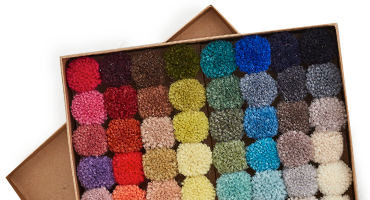Buying a rug is a big decision – whatever your budget, and whether you’re furnishing your home or doing up an office or other business space. To give you some guidance into the process, I’ve put together a list of all the key rug elements – from how to decide on colour and texture, to ensuring your new purchase is the right size and shape for your space.
size
One of the most important aspects in choosing a rug is how large it should be. For open-plan living, rugs are a great way to create different zones in the home, whether grounding a seating area or sectioning off your dining.
A good rule of thumb is to choose a rug that’s slightly larger than the area you’re creating – it should incorporate at least the front legs of your living room furniture and overlap your bed, dining or office area.
If you go for a smaller size rug, bear in mind that a bold pattern can make it look a larger size – but if you want even more impact, layer it over a cheaper, larger jute rug.
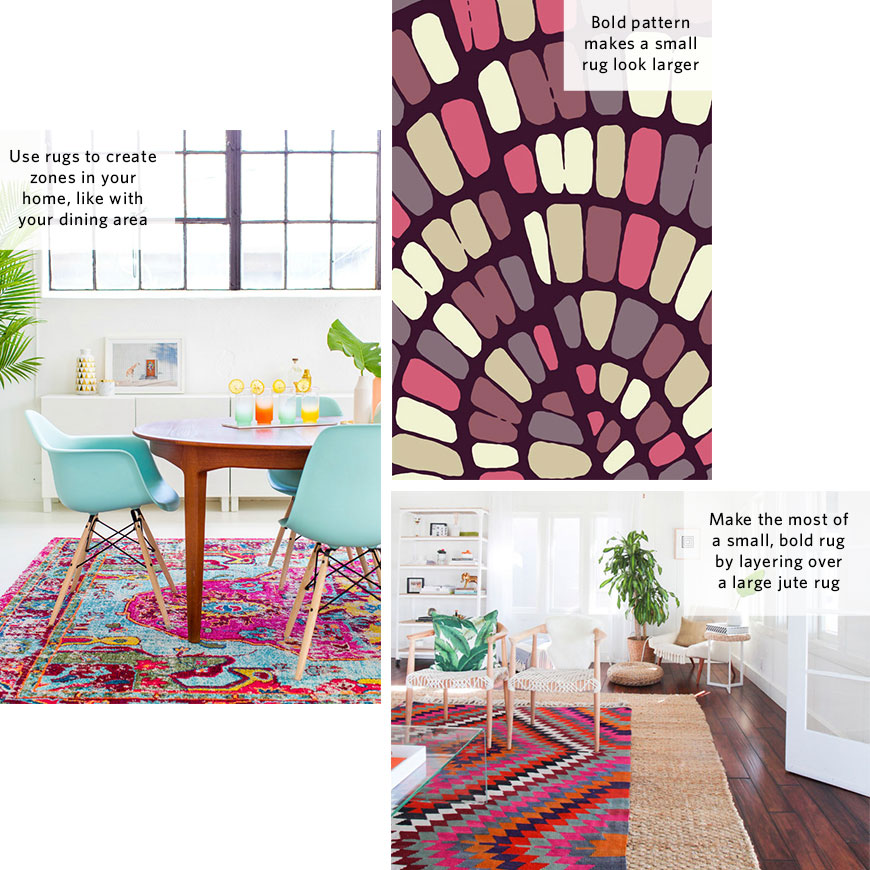 Images courtesy of diningroomideas.eu and domino.com
Images courtesy of diningroomideas.eu and domino.com
colour
A great way to set the tone and mood of a space from the minute you step inside is by playing with colour. Dark tones typically evoke a more intimate mood and lighter hues feel more playful – but of course, there’s more to colour than mood.
When choosing a colour, it’s best to think along the lines of subtle versus statement. Calming, soft colours, like light blues and greens, can be the perfect backdrop for relaxing living rooms and bedrooms, while spicier reds and purples add vibrancy to kitchens and entertaining spaces, meaning your rug can be more of a talking point. As for earthy tones and rich greens, these can really help bring the outside in for conservatories and garden rooms, while colourful rooms benefit from single-colour designs and pared-back neutrals. You can always commission a bespoke design if you need to match colours exactly, and if you’re not sure what colour you want for your space, neutrals make the perfect base for layering colours.
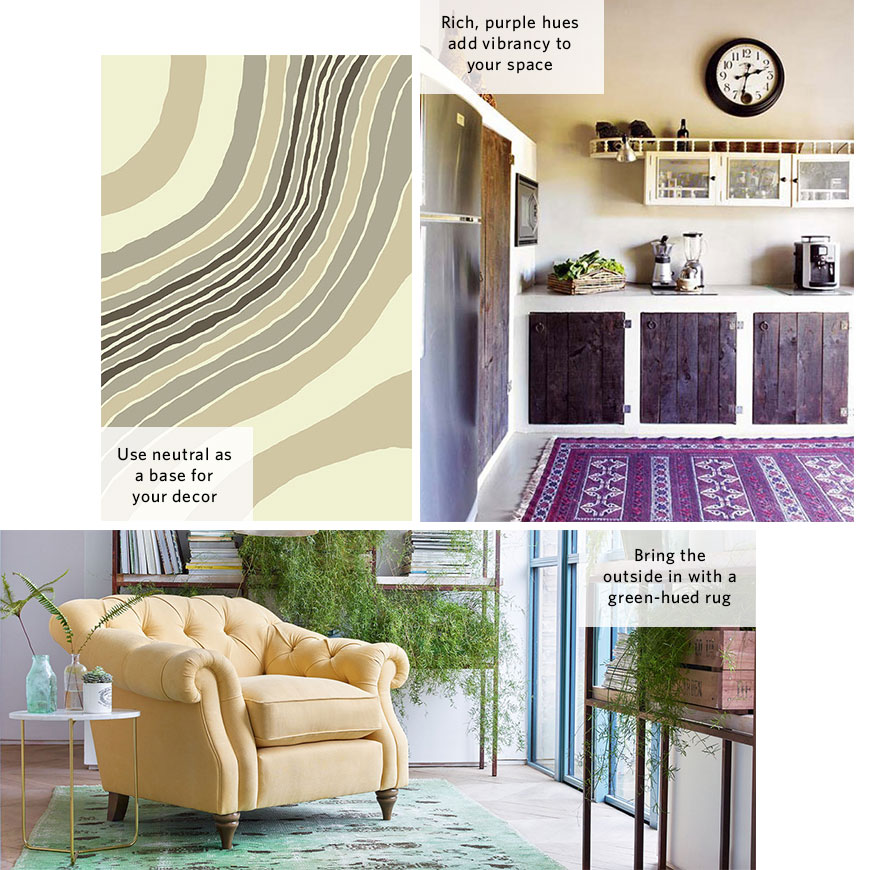 Images courtesy of kitchenbuilding.com and arloandjacob.com
Images courtesy of kitchenbuilding.com and arloandjacob.com
shape
Your rug shape should complement your interior – so it’s best to go for something that mimics your furniture. Round rugs work best with round tables, narrow runners are ideal for corridors and rectangular designs can help anchor a sofa suite. Round designs are also ideal for adding a softer, more relaxed note to your interior, and unlike rectangular designs, don’t need to perfectly fit your space.
Whatever design you pick, ensure its key shapes and colours aren’t covered by any furniture or accessories. Alternatively, make your rug a great standalone talking point – such as by choosing a quirky cut-out design.
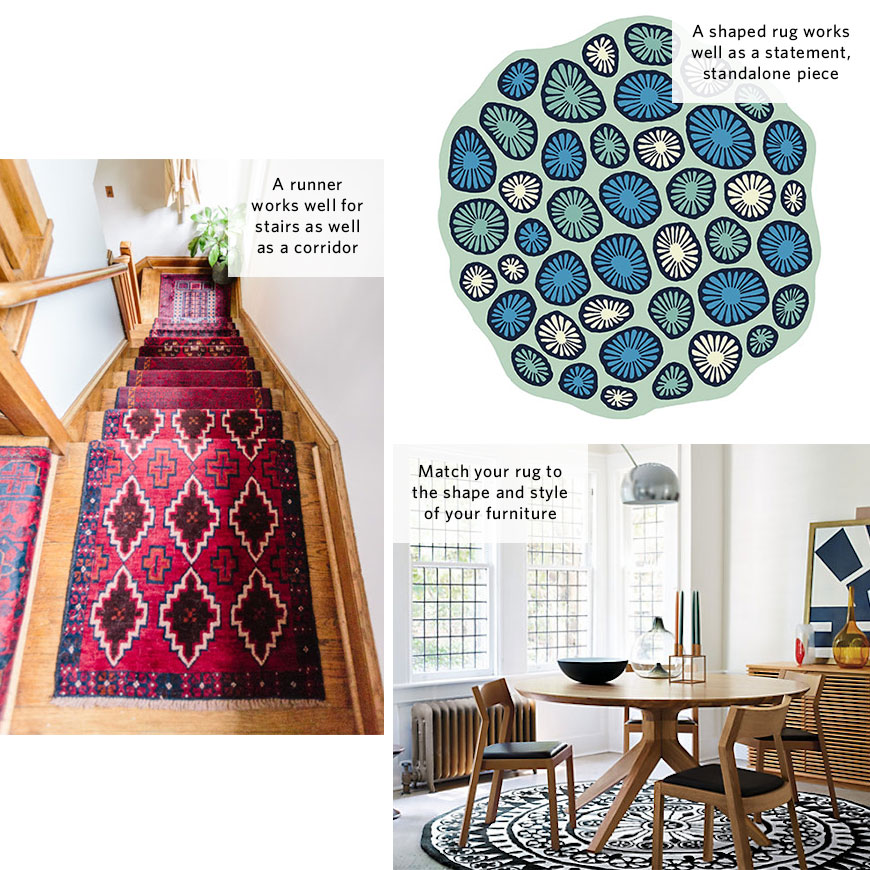 Images courtesy of Wit and Delight and remodelista.com
Images courtesy of Wit and Delight and remodelista.com
texture
It’s often the last consideration on the list, but texture is a key aspect of any rug – not only because the type of pile affects how the piece will wear over time, but also because different weaves can elevate certain design features. I offer four different types of pile for my rugs, which can be viewed on my website here. Ordering a rug sample is a hassle-free way to try out how these different piles look and feel.
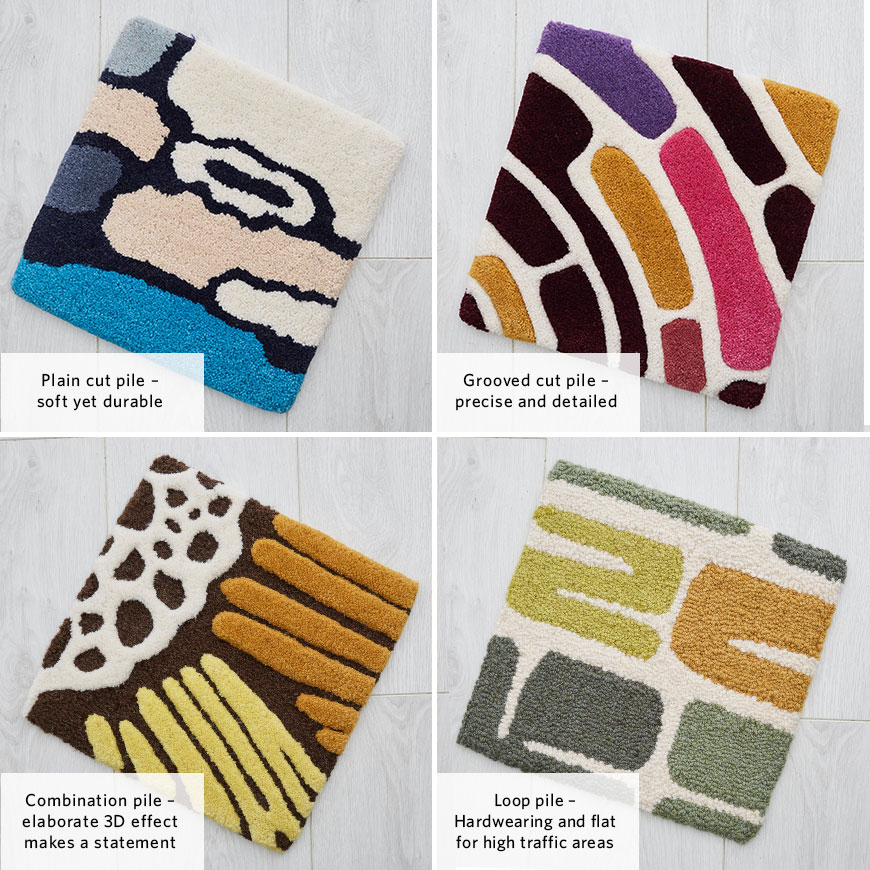
Choosing a textured rug can help break up your space – especially if you’ve opted for smooth laminate flooring and painted walls. In fact, rugs can provide a textural contrast to just about anything in your space, and using lots of different textures in both your rugs and in other soft furnishings will add layers of interest to your décor.
Whatever you’re looking for, you can browse my rug designs by shape or collection, or commission your bespoke design today.



